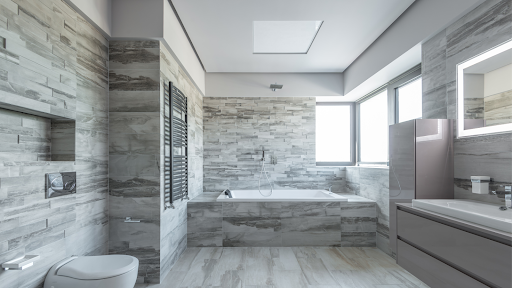The longevity of your bathroom is more than just a matter of aesthetics. Waterproofing is a crucial part of bathroom maintenance, as it protects against moisture’s damaging effects. Waterproofing your bathroom is important for preventing leaks and protecting the structure of your house. This guide will provide you with practical tips on how to waterproof your bathroom. We’ll also cover the use of waterproofing paints for exterior walls and concrete surfaces.
Understanding the Importance waterproofing
Water damage in bathrooms is a major problem. Why? Bathrooms are areas with high moisture, which makes them susceptible to problems like water damage, mould growth, and structural degradation. Waterproofing is a barrier that prevents water from seeping through surfaces and causing damage. Here are some tips on how to improve the waterproofing in your bathroom.
1. Seal Joints and Gaps
Improve your bathroom’s game! Seal any gaps around pipes and faucets. Also, seal the joints where walls meet floors. Imagine using an armor-like waterproof sealant to keep water out and keep your bathroom cool and dry. There are no sneaky leaks!
2. Select the right waterproofing paint for concrete surfaces
The right paint is essential for your bathroom. Paints that are not waterproof will not work. Use a special concrete waterproofing paint. This paint creates a barrier that keeps water out of the bathroom. We have products that are specifically designed for this purpose.
3. Use Waterproof Paint on Exterior Walls
It is important to take your waterproofing outside! The exterior walls also need some love. Outside walls are protected by waterproof paint against the elements, rain and humidity. This paint will give your bathroom an extra layer of waterproofing, especially if you are facing the elements outside.
4. Investing in Quality Tiles and Grout
The right tile and grout can make or break a bathroom’s waterproofing. Choose tiles such as ceramic or porcelain that have low water absorption. They are the MVPs. To stop water from sneaking in, seal grout lines tightly. Fix any cracked tiles and grout as soon as possible to maintain your waterproof fortress!
5. Installing a Bathroom Fan
What is a bathroom without an effective ventilation system? Installing a bathroom fan of high quality can help to expel humid air and keep your bathroom free from odors and moisture. It also prevents mould growth, and contributes to the longevity of your bathroom.
6. Caulking Inspection and Maintenance
Water can’t get in! Caulking will help you waterproof your bathroom. Regularly inspect the area around your sink, bathtub, and shower. Don’t hesitate to replace any caulking that is damaged or worn out. This simple step will keep your seal in place and ensure that your space is protected against leaks.
7. Shower Area Slope: Make sure it is Correct
Have you ever wondered why water doesn’t stagnate in those upscale hotels we love? The slope helps to keep water flowing without accumulating. The water should be directed towards the drain of your shower. Make sure that the floor slopes properly to allow water to drain. It will prevent water from collecting in certain areas and reduce the risk of water damage.
8. Use Waterproofing Membranes
Add waterproofing membranes to your arsenal of waterproofing techniques. Be sure to pay attention to the key areas, such as around the bath and shower. These membranes add an extra layer to protection, acting like a superhero’s cape. These membranes prevent water from getting into the cracks and crevices of your bathroom, ensuring that structural superheroes remain dry and strong.
9. Regularly check for leaks
Regular inspections are like a bathroom health check. Be on the lookout for any water stains, peeling or cracked paint, and other signs of water damage. You can prevent bigger problems by catching these issues early. Your bathroom will thank for years of leak free bliss if you stay vigilant.
10. Consult a professional
Are you feeling a little lost in the waterproofing maze? No worries! Contact a professional for expert advice. A waterproofing expert can examine your setup and offer custom solutions for moisture control. You’ll feel like you have your own personal moisture superhero, because every bathroom needs a protector against leaks..
Conclusion,
It is important to achieve effective waterproofing for the durability and aesthetics of a bathroom. Each step, from choosing the right waterproofing paint for concrete to ensuring adequate ventilation, contributes to creating a watertight barrier.
By investing time and money in waterproofing your bathroom now, you can avoid costly repairs or renovations later. These tips combined with Bathroom Waterproofing in Melbourne paints can be very beneficial, whether you are undertaking a bathroom renovation or looking to improve the durability of your existing bathroom. Manage moisture in your bathroom and maintain a robust, dry environment.
